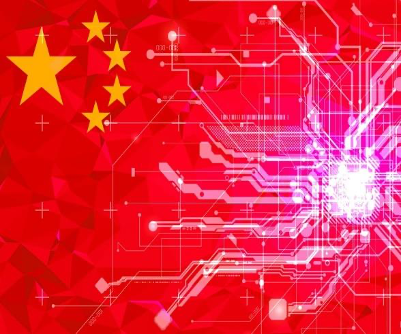
By Lieutenant Colonel Munawwar Hussain(Retd),
Research Intern at ‘International Online Internship Progran, CGSS – Communication University China(Beijing), China’
Artificial Intelligence (Al) and 5G will become the most important emerging technologies within the next 10-20 years with the potential to fundamentally alter the global balance of power. They will most probably propel the 4th Industrial Revolution1 Geopolitical and economic supremacy will be determined by those powers who manage Al and 5G to their advantage. Russia and China are challenging the U.S. by a new technological competition in economics, military modernization and means of social control that capitalize on the advancements that these technologies provide. Germany and the EU are lagging behind in both 5G and AI adaptation. Their global competitiveness will continue to decline unless they invest in EU-based, technology-capable companies that can manage big data and exploit the seemingly limitless opportunities such data offers.

The next industrial revolution triggered by Al and enabled by 5G will profoundly change human interactions. This change in technological modernization is not without challenges and consequences for the U.S.-led world order that has endured for the last 75 years. China has documented explicitly that by 2049 it plans to become the world,s premier global superpower, thus surpassing the United States[1]. Modern information and communications technologies (5G, AI and Quantum computing) will enable China to enhance its national strength and extend its global influences. And this will be done by digital means in areas that were previously managed physically, such as by law enforcement personnel, military forces, or border control and facilities.
Global Power Competition in Technology

Russian President Vladimir Putin stated on September 1,2017, during a meeting with students in Yaroslavl, Russia, that whoever controls Artificial Intelligence and 5G technology will control the world[1]. This assessment must be understood as a continuation of traditional warfare. It is important to realize that the ultimate goal of a respective regime or government whether economic, geopolitical or societal, will be reflected by the way Al coupled with 5G is used as a tool of governance or statecraft and must be understood through the perspective of intention. The application of Al and 5G as a tool of warfare clearly can be seen as a continuation of politics by digital means. Thus, Al and 5G must be viewed not only as the key component of the 4th Industrial Revolution but also as a revolution in warfare, which is commonly referred to as a ''revolution in military affairs RMA . Just as the bow and arrow were replaced by gunpowder and guns, Al will forever change how warfare is conducted.
We are now witnessing a new Great Power Competition, not only in a technical revolution of military affairs, but also in the wider geopolitics of technology[5].The traditional global presence of the United States was guaranteed by treaty-based alliances and an international network of military bases and personnel. The U.S. ability to intervene at any place or time guaranteed the Pax Americana that, since World War II, has brought a liberal political and economic order to Europe, lasting peace and the end of the Cold War. This Western, rules based, liberal-democratic political order, which dominated÷, much of the second half of the 20th century is now increasingly in question[6].
The main 5G players today are the United States, Russia, China, and to a lesser extent, the European Union∙ Large tech companies however are mainly located in the United States and China, while Russia is primarily focused on military and government efforts. Technologically, the EU lags them all[7].
China's Strategy
No country has devoted more effort to preparing the ground for the rollout of fifth-generation mobile (5G) than China, It has played a key role in establishing 5G standards globally. Started a decade earlier Chinas mobile companies and networking[5,6,7] equipment suppliers Huawei and ZTE and China,s leading mobile carriers now, with government support and leading mobile technology companies, are accelerating de-ployment of 5G networks as a national priority . Chinese officials see 5G technology as a way for China to both upgrade its traditional industrial base for the coming digital economy and to serve as a platform for China to become a major player globally in the infrastructure that will underpin the next generation of the Internet and enable new applications such as autonomous vehicles, factory automation, and smart cities. This is the prize for Beijing: demonstrates that China can lead an infrastructure build-out both domestically and globally, and give Chinese companies and the Chinese government more of a role in how the new digital economy will be built and managed.
China’s push to build full standalone 5G networks is the central pillar of its strategy. Full standalone 5G will include two other revolutionary features in addition to faster data speeds: ultra-reliable and low latency communications and massive machine-to-ma- chine communications for applications involving the Internet of things (loT). The catch is that building full standalone 5G networks is a massive infrastructure challenge, re-quiring huge investments in fiber backhaul capacity and a far higher density of antennas than previous generations of mobile networks. To ensure China’s place at the cutting edge of standalone 5G, in 2013, three powerful Chinese ministries一the Ministry of Industry and Information Technology (MIIT), the National Development and Reform Commission (NDRC), and the Ministry of Science and Technology (MOST)一jointly set up a new group known as the IMT-2020 5G Promotion Group to push an all-government and all-industry alliance on 5G. All of the key players in the massive Chinese tele-communications ecosystem are active participants in the work ofthe Promotion Group.
For example:
• Major research institutes under the MIIT such as the Chinese Academy of Information and Communications Technology (CAICT) and the Beijing University of Posts and Telecommunications (BUPT)
• The three major Chinese operators, China Mobile, China Telecom, and China Unicom
• Mobile infrastructure equipment makers Huawei and ZTE
• Mobile device makers such as Xiaomi, Oppo, and Vivo
Other Chinese companies such as Lenovo and universities including Shanghai Jiaotong are also participating in the program.
Illustrating how important China,s political leadership considers 5G to be to the future development ofthe digital economy and revamping the industrial base, 5G technology has been included in virtually all of China,s major technology plans and strategies. This includes Made in China 2025 and the National Informatization Development Strategy, which calls for China to 'vigorously launch arrangements for fifth-generation mobile telecommunications (5G) technology research, development, standardization and in-dustrialization. China is also engaging the top most companies of the field in the process. The major Chinese carriers each began installing trial 5G networks in 2018, with some initial commercial deployments launched in late 2019. China Unicom has tested 5G networks in 16 cities, including Beijing、Shenzhen、Tianjin, and Shanghai. Significantly the company has an agreement with Huawei for testing network slicing — specifically for autonomous vehicles and advanced manufacturing and for gaming, using AR/VR applications.
China does have another major advantage-some of the carriers have already begun constructing the considerable fiber backhaul network that will be required to support full standalone 5G. China Tower, which finances the building of much of the mobile radio infrastructure, raised nearly $7 billion in an August 2018 IPO in Hong Kong, adding to state backed resources for moving 5G deployment forward. China’s 5G rollout—gained major momentum in late October 2019 when MIIT and three leading telecommunications carriers held a cere - mony to officially launch 5G commercial services. Full standalone 5G installations will initially likely be limited to areas such as corridors for autonomous vehicles and dedicated smart city infrastructure of the type going up In Xiong’an, President Xi Jinping’s signature smart city southwest of Beijing.

Bans on Huawei and ZTE by the world power has put an adverse effects on the implementation of 5G networking. However it is expected that it will be over come soon.USA s propaganda to convince its allies to ban these networks and establish the 5G network to balance the advancement is far from reality. Europe, Asia and other countries are making choices to be allies of China or USA in the fight. However China’s balance is seen heavy in this and they are confident to receive better benefits of their 5G technology coupled with IA. China is hopeful to lead the world with far most margin from the rest in the 5G technology in the stipulated period. In nutshell China’s government backed 5G policy will pay much more dividends to the rise of China in the 5G technology.
Published on 17th November 2020
Copyright© Center for Global & Strategic Studies (CGSS), Islamabad
1 Fricke, Benjamin. Report. Konrad Adenauer Stiftung, 2020. Accessed November 12, 2020. doi:10.2307/resrep25281.
2 Jason Lee, The World Is Too Important to Be Left to America. A Chinese Bestseller charting a path for global dominance appears in English for the first time, The Atlantic, https://www.theatlantic.com/international/ar- chive/2015/06/china-dream-liu-mingfu-power/394748/, published June 4, 2015, Access November 13, 2019.
3 Vladimir Putin warns whoever cracks artificial intelligence will ‘rule the world’, Daily mail, https://www.dai- lymail. co.uk/sciencetech/article-4844322/Putin-Leader-artificial-intelligence-rule-world.html, published September 1, 2017, Access November 14, 2019.
4 Dan Goure, The Next Revolution In Military Affairs: How America’s Military Will Dominate. And China and Russia won’t like it one bit, The National Interest, https://nationalinterest.org/blog/the-buzz/the-next-revolution- militaryaffairs-how-americas-military-23833, published December 28, 2017, Access November 14, 2019.
5 For further reading on individual countries the three part study by Dr. Olaf J. Groth/Dr. Mark Nitzberg/Dan Zehr, Comparison of National Strategies to Promote Artificial Intelligence, published by the Konrad-Adenauer-Stiftung, published 2019.
6 Michael Stürmer, Die Pax Americana ist am Ende – und Europa ignoriert das, Welt, https://www.welt.de/debatte/kommentare/article6072680/Die-Pax-Americana-ist-am-Ende-und-Europa-ignoriert- das.html, published August 8,2008, Access November 14, 2019.
7 Michael Zillner, Why is Europe Lagging Behind in the Tech Race?, European Generation,https://www.european- generation.eu/single-post/2019/02/14/Why-is-Europe-Lagging-Behind-in-the-Tech-Race,published February 14, 2019, Access November 16, 2019.
8 Triolo, Paul. China’s Uneven High-Tech Drive: Implications for the United States. Report. Edited by Kennedy Scott. Center for Strategic and International Studies (CSIS), 2020. 21-28. Accessed November 12, 2020. doi:10.2307/resrep22605.10.
